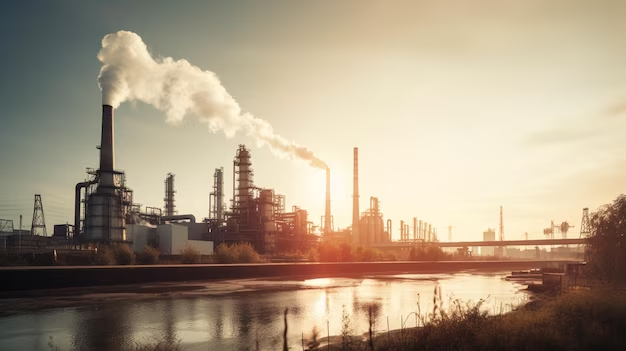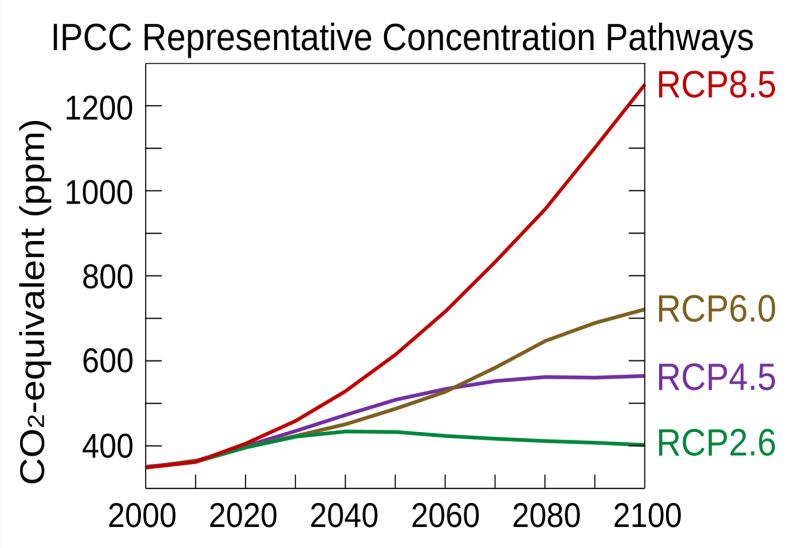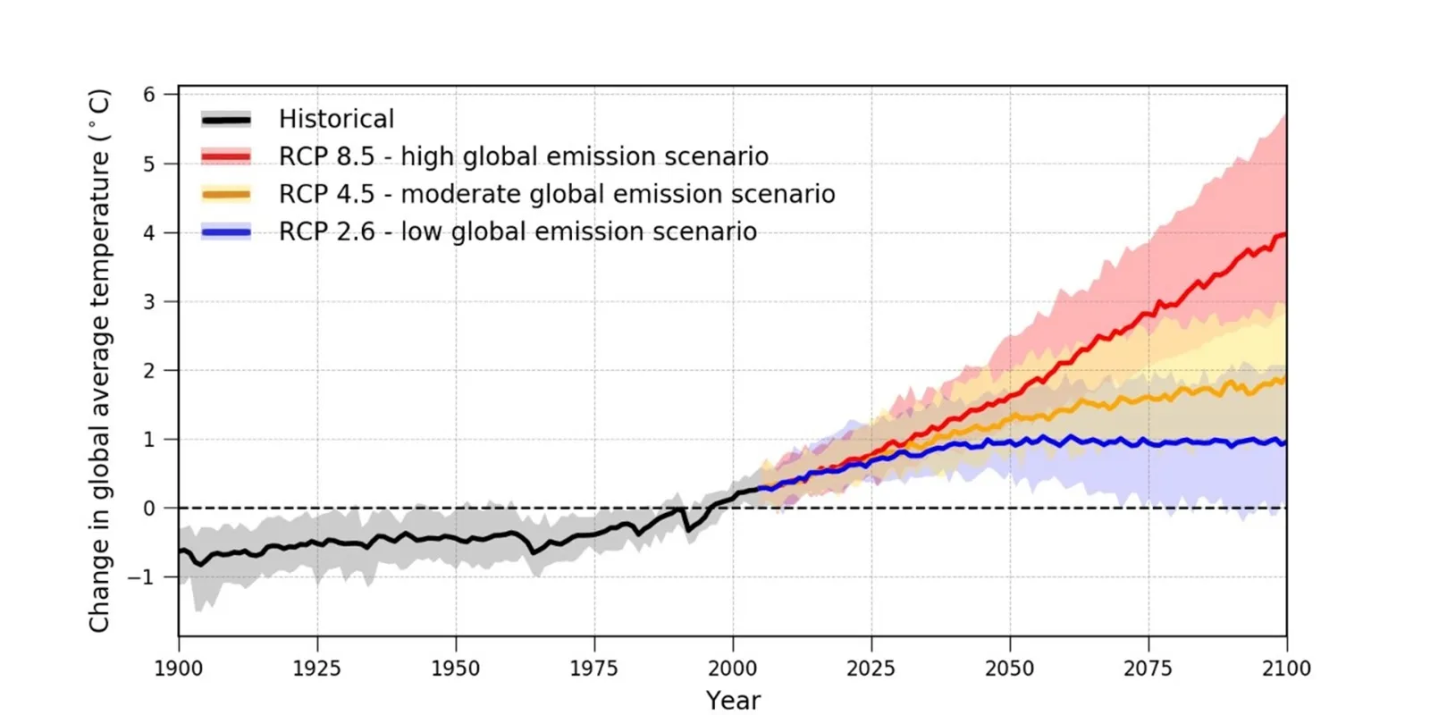Description

Copyright infringement not intended
Picture Courtesy: https://www.freepik.com/premium-photo/industrial-landscape-with-smokestacks-factories-emitting-carbon-emissions-representing-negative-impact-climate-change-air-quality-generative-ai_43175788.htm
Context: Representative Concentration Pathways (RCPs) are tools that project different future greenhouse gas concentration levels, allowing climate models to predict the potential range of climate change impacts like temperature rise and sea-level changes.
Details
Emission Scenarios
- Emission scenarios, also known as emissions pathways, are hypothetical trajectories that depict the future emissions of greenhouse gases (GHGs) and aerosols resulting from human activities such as burning fossil fuels, land-use changes, industrial processes, and agricultural practices.
- These scenarios are used as inputs for climate models to simulate and project how different levels of GHG emissions will influence future climate conditions, including global temperatures, precipitation patterns, sea level rise, and other climatic variables.
- Emission scenarios are constructed based on various assumptions about future socioeconomic factors, technological developments, policy interventions, population growth, energy consumption patterns, and land-use changes.
- They help scientists and policymakers explore a range of possible future outcomes and assess the effectiveness of different mitigation and adaptation strategies in addressing climate change.

Representative Concentration Pathways (RCPs)
- Representative Concentration Pathways (RCPs) are a set of standardized emission scenarios developed by the Intergovernmental Panel on Climate Change (IPCC) to facilitate consistent climate model simulations and comparison of results across different research studies.
- RCPs specify concentrations of greenhouse gases in the Earth's atmosphere that will lead to a certain level of radiative forcing by the year 2100 compared to pre-industrial levels.
- Radiative forcing refers to the difference between the amount of solar energy absorbed by the Earth and the amount of energy radiated back into space. It is measured in watts per square meter and serves as a key indicator of the Earth's energy balance and climate change.

There are four main RCPs
- 6 (or RCP3PD): This is considered the best-case scenario, assuming stringent mitigation efforts. It anticipates an additional radiative forcing of 2.6 watts per square meter by 2100. Emissions peak around 2050 and then decline, leading to a projected global temperature increase of 1.6 degrees Celsius above pre-industrial levels.
- 5: An intermediate scenario where radiative forcing reaches 4.5 watts per square meter by 2100. It represents a more moderate level of greenhouse gas emissions, projecting a global temperature increase of 2.4 degrees Celsius.
- RCP6: Another intermediate scenario, projecting a radiative forcing of 6 watts per square meter by 2100. This scenario foresees a global temperature increase of 2.8 degrees Celsius above pre-industrial levels.
- 5: Considered the worst-case scenario, RCP8.5 envisions a high concentration of greenhouse gases, leading to a radiative forcing of 8.5 watts per square meter by 2100. This pathway projects a substantial global temperature increase of 4.3 degrees Celsius.

Significance and Use
- RCPs are not predictions but rather tools used to explore a range of possible climate outcomes based on different emission trajectories. They help policymakers, researchers, and the public understand the potential consequences of varying levels of greenhouse gas emissions. By considering these scenarios, informed decisions can be made to mitigate emissions, adapt to inevitable climate changes, and work towards a more sustainable future.
Conclusion
- Emission scenarios and Representative Concentration Pathways (RCPs) are tools for projecting future climates based on different greenhouse gas emission trajectories. RCPs like RCP2.6 offer an optimistic vision with a limited temperature rise, while RCP8.5 portrays a concerning scenario with a substantial temperature increase, underscoring the importance of urgent climate action. These scenarios guide policymakers in mitigating emissions and building a sustainable future.
|
PRACTICE QUESTION
Q. The concept of 'Loss and Damage' in climate negotiations refers to:
(A) Financial compensation from developed countries to developing countries for unavoidable climate change impacts.
(B) The irreversible loss of biodiversity due to climate change.
(C) The economic costs associated with preparing for climate-related disasters.
(D) The deterioration of infrastructure due to extreme weather events.
Answer: (A)
Explanation:
'Loss and Damage' is a critical point within climate negotiations. It specifically focuses on the irreversible consequences of climate change that go beyond adaptation measures. Developing nations argue that developed countries, historically responsible for high emissions, should provide financial support to address these losses.
|












